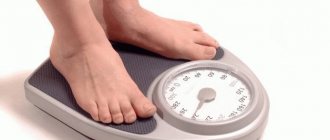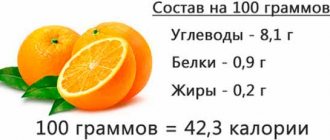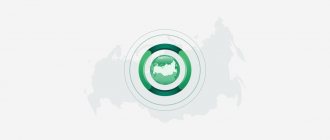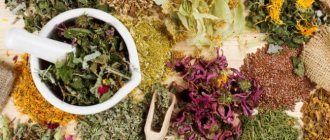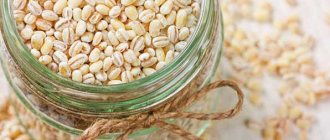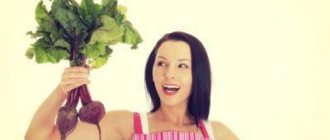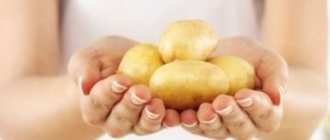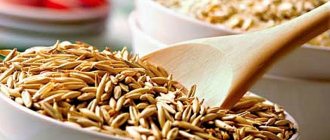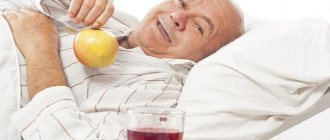The therapeutic diet for pancreatitis and cholecystitis plays a vital role in the healing process and maintaining the body in normal condition.
A diet for inflammation of the pancreas and gall bladder should be applied from the first symptoms of the disease, since it is a healthy diet that can influence the further development of pathologies towards improvement or worsening. Pancreatitis and cholecystitis are two ailments that can occur either independently or under the influence of one of them.
But both diseases are directly related to the digestive organs and are responsible for the processing of food in the human body. The diet for pancreatitis and cholecystitis has been developed over the years and now table No. 5 according to Pevzner is considered the most popular and effective.
What are cholecystitis and pancreatitis?
Cholecystitis is an inflammation of the gallbladder caused by the development of cholestasis. The cause of the latter is complete/partial blockage of the bile ducts. The development of cholecystitis can be triggered by the following factors: regular overeating, addiction to fatty meats, spicy foods.
Potential signs of an acute form of pathology are:
- nausea, vomiting;
- yellowing of the skin;
- bitter taste of saliva;
- increase in general body temperature;
- pain in the right hypochondrium.
Exacerbation can be caused by drinking alcohol and eating too fatty/spicy foods. The cause of acute pancreatitis is inflammation of the gland, caused by a violation of the outflow of pancreatic juice. As a result, pancreas cells begin to digest themselves, which causes the development of the pathological process.
Typical signs of pancreatitis are:
- severe pain in the left hypochondrium, sometimes of a girdling nature;
- nausea, vomiting;
- diarrhea;
- increased gas formation;
- significant increase in body temperature.
The diseases are closely interrelated. Cholecystitis can provoke a violation of the outflow of pancreatic juice, causing the development of pancreatitis. Conversely, the reflux of digestive enzymes of the pancreas into the lumen of the bile duct causes the formation of cholecystitis.
What happens if you don't follow a diet
Diet is a mandatory part of the treatment of pathologies of the pancreas and gallbladder, regardless of the stage of the inflammatory process. Diet changes have a therapeutic and preventive effect.
If you follow courses of drug therapy, but make mistakes in nutrition, then the patient’s tendency to recover can be significantly reduced.
Consequences of poor diet:
- reduction of the remission period;
- increased risk of sudden exacerbation;
- decreased tendency to recovery;
- violation of the effectiveness of the therapy.
Basic rules of dietary nutrition
Dietary nutrition for cholecystitis and pancreatitis is especially important during exacerbation of diseases. Restricting food takes the load off the inflamed organs and helps the body recover in a shorter time. During the first three days from the onset of the attack, the patient must completely refuse food. Only boiled water and a little Borjomi (no more than 200 ml) will be allowed.
After the pain subsides, the patient’s menu expands. He will be allowed unsweetened warm tea, homemade crackers, protein steamed omelet, rice porridge cooked with diluted milk, and pureed vegetable soups. After 7 days, you can add low-fat cottage cheese and stewed vegetables to your diet. Only cabbage is prohibited because it causes gas.
If the reaction of the gastrointestinal tract (GIT) remains normal - the person does not have nausea, vomiting, diarrhea or pain - then you can include dishes such as:
- souffle;
- steamed fish;
- steamed chicken breast or turkey cutlets;
- buckwheat and semolina.
Combined inflammation of both organs is called cholecystopancreatitis. In this case, the patient is prescribed diet No. 5. Its basic principles:
Table 5 for pancreatitis
- fractional diet - up to 6 times a day;
- small portions;
- food should be warm;
- the basis of the diet is proteins;
- Only steam cooking, baking in foil and classic cooking are allowed;
- It is allowed to use vegetable or skimmed broths for preparing soups;
- complete avoidance of fried foods, marinades, and caffeine-containing drinks.
Every day you need to drink 2.5 liters of clean drinking water.
Table number 5
The fifth table is a food system, which consists of a list of dishes, regime, and rules for processing food. Can be used in both adults and children. Its main goal is to improve and restore the functioning of the liver and biliary tract. In this regard, the indications for prescribing diet No. 5 are: chronic cholecystitis, liver cirrhosis (without decompensation), chronic hepatitis, liver steatosis. In addition, it is prescribed for 14-17 days after removal of the gallbladder. Also, table No. 5 can be used for mild toxicosis during pregnancy.
Diet 5 is applicable only in cases of chronic diseases outside of exacerbation and during periods of recovery. The use of this treatment table is contraindicated during periods of exacerbation of diseases and existing complications, as well as with concomitant gastritis or ulcers.
Content:
- Table number 5
- Therapeutic diet
- Menu for table No. 5
- Table number 5a
- Table number 5b
- Table number 5p
The diet is prescribed for a long time. At first it is prescribed for about a week with constant monitoring of the patient. If the nutritional system is tolerated normally, the course is extended. The duration of a therapeutic nutrition program is most often one and a half years and depends on the dynamics of the disease. Also, the prescribed diet No. 5 can be replaced or adjusted during this period.
A diet that includes table 5 is most often prescribed to patients with impaired liver and gallbladder function. Such nutrition improves the functions of these organs, and also normalizes metabolism and the digestion process. The program has a beneficial effect on almost all internal organs and can serve as a prevention of other diseases.
The main therapeutic effect on the liver, gall bladder and biliary tract is provided by three sparing factors. That is, the food taken should be gentle in chemical composition and mechanical processing. The temperature of the food you eat is also important.
Chemical composition. The main objective of diet No. 5 is to provide the patient with adequate nutrition, while excluding those foods that impair the functioning of the liver and gall bladder. For hepatitis, cirrhosis and cholecystitis, it is forbidden to eat foods high in cholesterol, fats, and essential oils. It is important to ensure that every day the patient consumes all the necessary components: proteins, carbohydrates, fats in small quantities. Salt is limited to 10 g per day. Table No. 5 is completely balanced and involves consuming 2500 kcal per day. For pregnant women, the daily calorie content should be at least 2800 kcal.
Diet No. 5 requires compliance with the temperature regime of the food consumed in the range from 20 to 60 degrees. Cold and too hot dishes are undesirable for diseases of the liver and bile ducts.
Mechanical processing is the grinding of food, which is necessary to facilitate the digestion process. For the fifth table, it is not necessary to chop or grind everything; a lot can be eaten in whole pieces. Vegetables with a high fiber content must be chopped: finely chopped, grated, boiled - grated through cheesecloth. The same goes for stringy meat.
Dietary dishes can be baked, boiled in milk or water, or steamed. Twice a week you can eat stew: vegetable stew, roast from minced meat, dietary cocotte. It is forbidden to eat fried foods, as such food contains fat oxidation products, which impede the production of bile, thereby impairing liver function. You need to eat often - at least 5 times a day, in medium portions.
Let's take a closer look at what the diet for a patient on the fifth diet may consist of.
List of permitted products
Products that can be safely included in the menu for cholecystitis and pancreatitis should contain a high percentage of proteins and a minimum of fat.
Dietary food developers recommend:
- Lean meats. Meat is the main source of protein. It is allowed to eat beef, veal, chicken (the skin is first removed), turkey and rabbit. It is boiled or steamed. Adding salt to dishes is allowed, but in moderation.
- Low-fat fish. It is allowed to be served in the form of a soufflé, aspic, boiled or steamed.
- Slightly stale bread. It is allowed to serve crackers, toast, and yesterday's bread. It is allowed to cook pies with fish or cottage cheese, but baking is not used during the dough kneading process.
- Fermented milk, dairy products. The menu may include low-fat cottage cheese, low-fat yogurt, kefir, sour cream (limited).
- Eggs. Served as a steam omelette or cooked soft-boiled.
- Cereal products. Buckwheat, oatmeal, rice and semolina are allowed. Served as a separate dish or as a side dish.
- Soups. Prepared in vegetable and second meat broths.
- Vegetables. You can eat it in the form of steamed or simply boiled dishes.
- Vegetables and fruits with a sweet taste. It is good to bake apples and pears in the oven. You can serve dried fruits.
- Soufflé, marshmallows, caramels. Honey and jam are allowed in small quantities.
- Oil. Creamy and vegetable products are allowed, but in limited quantities.
What is allowed to be eaten?
Do not think that a diet for cholecystitis is a diet that is monotonous in composition and taste. Outside of an exacerbation of this disease, it is allowed to consume quite a lot of foods and dishes that are properly prepared.
The diet can include:
- Lean meats: chicken, turkey, veal, rabbit. They can be prepared as a whole piece or in small pieces, in the form of chopped cutlets (steamed or baked), minced meat balls, casseroles, and soufflés. Boiled beef tongue is allowed.
- Some types of factory-made sausages: low-fat ham, milk sausages, Doktorskaya type sausage (in natural casing).
- Fish (low-fat varieties), usually boiled or baked, as part of a soufflé or cutlets.
- Seafood.
- Soups with low-fat meat broth (preferably the second one, the first portion is drained after boiling), with vegetable broth. In this case, you should avoid using the so-called “frying” of vegetables in oil as a dressing.
- Vegetables (except those on the prohibited list) fresh or cooked. At the same time, it is necessary to monitor your well-being and avoid foods that cause a feeling of heaviness in the stomach, bloating and flatulence.
- Cottage cheese (low-fat or normal fat), low-fat fermented milk products, milk up to 5 - 6% fat.
- All cereals, including partially processed ones (couscous, semolina, cooking flakes).
- Eggs (chicken and quail), but you should remember the need to limit the consumption of yolks. Therefore, most often dishes (omelettes, scrambled eggs) are prepared using several proteins and 1 yolk. And with calculous cholecystitis, you should abandon the yolks altogether.
- Fruits, if they do not provoke increased gas formation. They can be consumed fresh and baked, as well as in the form of dried fruits.
- Stale bread (slightly stale, 2–3 days old), unsweetened bread—unsweetened crackers, biscuits.
- Drinks: weak teas of various compositions, drinks based on chicory or barley, non-concentrated compotes, jelly, rosehip decoction.
Sometimes, in case of chronic cholecystitis, in consultation with the doctor, fiber is introduced into the diet in the form of steamed bran, which improves intestinal motility and helps harmonize the functioning of the biliary system.
List of foods to exclude
What you can eat for these diseases is now known. But what is it forbidden to eat? The list of products that are prohibited is represented by the following items: strong brewed black tea, coffee, drinks with gases, alcohol (it can become a provoking factor for exacerbations of any of the pathologies).
Lard and fatty meats are also prohibited. The latter includes pork. The animal fats contained in the product make the digestive organs work harder, stimulating the production of bile and pancreatic juice. Limited to:
- Fresh baked goods.
- Rich meat broths.
- Mushrooms. Broths made from them are completely prohibited, as are the mushrooms themselves.
- Vegetables that irritate the gastric mucosa. These are onions, garlic, sorrel, radishes.
- Chocolate and cream.
- Sauces, seasonings with a spicy taste.
- Smoked and salty. They have an irritating effect on the mucous membranes of the stomach, are difficult for the body to absorb, and cause indigestion.
The diet for cholecystitis and pancreatitis should completely exclude foods that can cause digestive difficulties.
Causes of pancreatitis
They can be different, but in general they are associated with eating disorders:
- starvation;
- diet;
- fatty and spicy foods;
- poisoning;
- alcohol.
Also, sometimes the disease occurs due to hormonal disorders, infectious processes in the body or heredity.
Elderly people are at risk for this disease, so it is especially important for them to monitor dietary restrictions. This will protect your body from undesirable consequences, for example, when the organ begins to digest itself.
Diet for acute pancreatitis
During the period of exacerbation of the pathology, the patient develops severe pain and has no desire to eat. The patient's health deteriorates significantly. During the first 3–5 days, therapeutic fasting is recommended. During this period, the patient can only drink. It should be water without gas.
After the pain subsides, the menu can include vegetables crushed to a puree, soups thickened with cereals - they need to be cooked only in water, vegetable broths without salt and spices. When cooking soups, you can use oatmeal or buckwheat. During an exacerbation, you should not eat millet, egg and corn grits. In chronic diseases, these types of cereals should be limited as much as possible.
As the condition stabilizes, the menu can be expanded to include boiled veal and chicken. The patient begins to be served oatmeal cooked in water and mashed potatoes. Before serving, it is diluted with broth to form a puree soup. Salting and adding milk to these dishes is strictly prohibited.
After 14 days from the onset of the attack, the diet may include low-fat dairy products. The best choice would be milk or kefir. Cottage cheese is allowed, but in limited quantities. Porridge can now be cooked with milk diluted with water. You can eat steamed vegetables. A decoction of rose hips is served as a drink.
If unpleasant symptoms appear - nausea, vomiting, pain - you must immediately exclude the foods that caused the disease to worsen. 2 months after the exacerbation, the patient is prescribed a special dietary food - table No. 5P. It is typically low in fat and carbohydrates. Meals should be fractional up to 6 times a day.
Sample diet menu No. 5
Tasty and healthy
Dishes from the oven will enrich the patient’s diet, and a dietary dessert will be an excellent end to the meal:
| Name of the dish | Ingredients | Preparation |
| Beef in its own juice |
| Having rubbed a whole piece of beef with spices, put it in a baking sleeve and put it in a low-heat oven for several hours so that it can be properly soaked in its own juices. Baked lean meat has a delicate, rich taste and goes well with any side dishes. |
| Baked red fish |
| The fish is cut into portions and placed on a baking sheet. Place a small floret of broccoli on each piece. Sprinkle a little cheese on top and bake until done. |
| Baked stuffed pumpkin |
| Boil the rice, mix it with honey, spices and dried fruits. We fill the seeded pumpkin with the resulting sweet pilaf, having previously greased it with honey from the inside. Bake in the oven, covering with foil. |
| Diet panna cotta |
| After mixing boiled milk, gelatin, sugar and vanilla, pour the mixture into silicone muffin molds. Decorate with fruit or add diced marmalade to the mixture. Leave in a cool place to gel. Sugar can be replaced with stevia or any other sweetener. |
Diet for acute cholecystitis
The acute form of cholecystitis is accompanied by severe symptoms. In the first few days the patient is allowed:
- pure still water;
- vegetable juices, previously diluted with water;
- unsweetened compotes;
- decoction of mint, rose hips or chamomile.
Coffee and strongly brewed tea are prohibited. The acute period, during which the patient refuses to eat, lasts no longer than 4 days. After this, the diet can be gradually expanded. In this case, it is necessary to ensure that the digestive tract is not overloaded.
The menu should include:
- semolina, rolled oats, boiled rice, cooked in milk diluted with water;
- boiled potatoes;
- steam pureed vegetables – zucchini, cauliflower, pumpkin pulp;
- slimy cereal soups;
- vegetable puree soups;
- soaked crackers.
All dishes served must be either pureed or have a semi-liquid consistency. There should be no solid inclusions that can cause irritation of the mucous membranes. You need to expand your diet every two days, including the following products in the menu: lean fish - pollock, navaga, hake, cod, lean meat - chicken breast, veal with cut veins, turkey, egg whites, low-fat cottage cheese.
There are restrictions on the use of salt and sugar. Eating fresh vegetables and fruits is undesirable, as they can provoke cramps, fermentation and increase gas formation. During the recovery period, which lasts on average three months, the patient is also advised to adhere to the principles of dietary nutrition.
A person’s menu should include:
- buckwheat porridge;
- weakly brewed teas, grain coffee;
- jam, marshmallows or marshmallows;
- egg yolks (no more than 2 pieces per week);
- carefully chopped vegetables and fruits.
Diet menu
Monday
| Breakfast | Oatmeal with milk diluted with water, weak tea with crackers |
| Lunch | Baked apples with cottage cheese |
| Dinner | Vegetable-based soup, boiled chicken breast, beet salad, rosehip infusion |
| Afternoon snack | Baked pear |
| Dinner | Pasta with boiled fish, jelly |
| Before bedtime | A glass of kefir |
Tuesday
| Breakfast | Steam omelet (from egg whites), weak tea, cracker |
| Lunch | Apple (non-sour variety) |
| Dinner | Vegetable soup, stewed vegetables with boiled fish, compote |
| Afternoon snack | Banana |
| Dinner | Rice casserole with vegetables, steamed meatballs, compote |
| Before bedtime | A glass of milk with reduced fat content |
Wednesday
| Breakfast | Steamed cheesecakes, a glass of tea with milk |
| Lunch | Compote with biscuits |
| Dinner | Rice soup, stewed carrots with steam cutlets, berry compote |
| Afternoon snack | Fruit jelly |
| Dinner | Baked vegetables with boiled chicken breast, jelly |
| Before bedtime | A glass of kefir |
Thursday
| Breakfast | Curd casserole, weak tea |
| Lunch | Oatmeal jelly with biscuits |
| Dinner | Vegetable soup, buckwheat porridge with steamed cutlets, compote |
| Afternoon snack | Fruit salad |
| Dinner | Mashed potatoes with boiled breast, weak tea |
| Before bedtime | Glass of fermented baked milk |
Friday
| Breakfast | Oatmeal jelly with biscuits |
| Lunch | Crackers with tea |
| Dinner | Soup with meatballs, buckwheat porridge with steamed cutlets, jelly |
| Afternoon snack | Cottage cheese with low fat content |
| Dinner | Fish casserole with stewed vegetables, compote |
| Before bedtime | A glass of milk |
Saturday
| Breakfast | Oatmeal, weak tea |
| Lunch | Low fat cottage cheese, baked apple |
| Dinner | Pumpkin soup, noodles with boiled meat, berry compote |
| Afternoon snack | Banana |
| Dinner | Rice with dried fruits, jelly |
| Before bedtime | Glass of fermented baked milk |
Sunday
| Breakfast | Rice pudding with berries or fruits, weak tea |
| Lunch | Fruit salad |
| Dinner | Vegetable soup, pasta with boiled meat, compote |
| Afternoon snack | Tea with milk and biscuits |
| Dinner | Mashed potatoes with fish cutlets, jelly |
| Before bedtime | A glass of kefir |
Diet for cholecystopancreatitis complicated by gastritis
When creating a menu, a nutritionist must take into account all the pathologies associated with the underlying disease. If gastritis occurs, it is necessary to make adjustments taking into account the level of acidity of gastric juice.
The nutritional features remain unchanged: the patient should eat fractionally up to 6 times a day in small portions, there should be no long breaks between meals, overeating and eating on the run, as well as dry food, drinking alcohol and smoking are prohibited. Menu development is carried out individually for each patient. The doctor should take into account the acidity of gastric juice.
Why are enzymes so important in digesting food?
Such elements directly affect digestion. They are produced by the stomach, pancreas and small intestine. Each breaks down certain components of food.
With pancreatitis, the pancreas practically stops synthesizing enzymes, which is where their deficiency occurs. Digestive functions are then disrupted and undesirable reactions occur, such as diarrhea, vitamin deficiency, anemia and dehydration. The patient may also experience sudden weight loss, heartburn, nausea and vomiting. Due to prolonged enzymatic deficiency, the body is completely depleted, which is why it is so important to seek qualified help in a timely manner.
Recipes
We offer several recipes for dishes that can be served during remission.
Vegetable soup with cheese meatballs
Ingredients:
- vegetable broth – 500 ml;
- carrots, onions, red pepper;
- potatoes – 4 pcs.;
- cheese with a neutral taste – 110 grams;
- egg;
- flour – 90 grams;
- greenery;
- butter;
- salt.
Preparation: grate the cheese, add flour, softened butter, and salt. Mix and put in the refrigerator. Cut the pepper into strips, grate the carrots on a coarse grater, cut the onions and potatoes into cubes. Place in broth and cook for 15 minutes. Roll the cheese mixture into balls and drop them into the soup. Cook for another 15 minutes. When serving, sprinkle with chopped herbs.
Potato cutlets with sausages
Ingredients:
- potatoes - 7 medium-sized tubers;
- bulb;
- greenery;
- hard cheese – 200 grams;
- milk flask – 250 grams;
- eggs – 3 pieces;
- flour – 3 spoons;
- sour cream.
Preparation: boil potatoes, cool. Grind through a grater. Place grated cheese and diced sausage in it. Add flour, eggs, onion and flour. Form cutlets from the well-mixed mixture and cook in a double boiler. Serve with sour cream.
Puff omelette with potatoes in a steamer
Will need:
- boiled potatoes – 210 grams;
- eggs – 4 pieces;
- milk – 100 ml;
- spices to taste and herbs;
- a little bit of cheese.
The patient can be served a dietary omelet cooked in a double boiler
Preparation: grate potatoes, beat eggs with milk, add salt. Cover the steamer bowl with cling film. Place a layer of potatoes, then pour in the omelette mixture and cover with grated cheese on top. Cook for approximately 25 minutes.
Pumpkin dessert
Cut the peeled pumpkin into pieces. Place it in a steamer bowl and sprinkle with sugar and cinnamon. Cook for 20 minutes. Doctors strongly recommend that their patients who have suffered inflammation of the gallbladder and/or pancreas adhere to the principles of dietary nutrition for as long as possible.
Even after recovery or the disease goes into remission, it is worth limiting the consumption of products from the prohibited list. This is especially true for smoked meats, marinades, alcohol and too fatty foods. Otherwise, you can again overload the pancreas or gallbladder and get a re-exacerbation of the disease. If the disease has become chronic, then it is advisable to follow the diet constantly.
Therapeutic diet
The list of permitted products is quite wide.
Restrictions apply only to fatty, spicy, salty and fermented foods, because such food increases the secretion of digestive juices of the pancreas and irritates the gastric mucosa. Below is a list of foods that should be limited or completely eliminated. Table ration number 5
| Group | Allowed | Forbidden |
| First |
|
|
| Vegetables |
|
|
| Meat |
|
|
| Fish and seafood |
|
|
| Flour |
|
|
| Cereals |
|
|
| Milk products |
|
|
| Eggs |
|
|
| Berries and fruits |
|
|
| Dessert |
|
|
| Beverages |
|
|
Having a list of acceptable dishes and products, you can create therapeutic nutrition. It is recommended to prepare the menu in advance, at least 2 days in advance. This way you can stock up on the necessary products and select recipes, and preparing dishes will take less time. Exact adherence to all diet rules will protect against exacerbation of the disease and speed up recovery.
results
By following a diet, namely excluding foods that increase acid formation, you reduce the load on the organ. If the form of the disease is mild, you still need to stick to this diet for several months. General recommendations should be followed throughout your life. This will prevent exacerbation of the disease.
Thus, proper nutrition and enzyme therapy will help replenish eczymes and reduce the unpleasant manifestations of the disease. Remember that you must strictly follow all the recommendations of the treating doctor, completely avoiding amateur treatment.
Fully or partially limited products
The diet for chronic cholecystitis and gastritis excludes the use of:
- Broths, since during cooking 50% of the extractive substances pass into them. In case of exacerbation, vegetarian soups are recommended.
- Fried foods (eggs, meat, pies, fish, potatoes, pancakes, pancakes), mushrooms, any sausages, smoked meats, canned food (you can include canned vegetables and meat for baby food).
- Fatty meat and fish, full-fat milk and cream (only in dishes), fish caviar, salted fish, sauerkraut cabbage soup, okroshka.
- Seasonings (garlic, onion, vinegar, pepper, roots, horseradish, mustard).
- Cooking fats, lard, goose and duck meat.
- Very cold drinks and food (ice cream, any food from the refrigerator).
- Fresh bread, pastries, cakes, strong coffee and cocoa.
- Products with oxalic acid (sorrel, rhubarb, spinach) and essential oils (garlic, onion, radish, radish).
- Legumes and coarse vegetables - radishes, turnips, white cabbage, radish.
- By-products due to their high cholesterol content - animal and poultry liver, kidneys, brains.
- Strong black coffee and tea, chocolate and cocoa.
Table of prohibited products
| Proteins, g | Fats, g | Carbohydrates, g | Calories, kcal | |
Vegetables and greens | ||||
| canned vegetables | 1,5 | 0,2 | 5,5 | 30 |
| swede | 1,2 | 0,1 | 7,7 | 37 |
| peas | 6,0 | 0,0 | 9,0 | 60 |
| bulb onions | 1,4 | 0,0 | 10,4 | 41 |
| chickpeas | 19,0 | 6,0 | 61,0 | 364 |
| radish | 1,2 | 0,1 | 3,4 | 19 |
| white radish | 1,4 | 0,0 | 4,1 | 21 |
| beans | 7,8 | 0,5 | 21,5 | 123 |
| horseradish | 3,2 | 0,4 | 10,5 | 56 |
| spinach | 2,9 | 0,3 | 2,0 | 22 |
| sorrel | 1,5 | 0,3 | 2,9 | 19 |
Berries | ||||
| grape | 0,6 | 0,2 | 16,8 | 65 |
Mushrooms | ||||
| mushrooms | 3,5 | 2,0 | 2,5 | 30 |
| marinated mushrooms | 2,2 | 0,4 | 0,0 | 20 |
Nuts and dried fruits | ||||
| nuts | 15,0 | 40,0 | 20,0 | 500 |
| almond | 18,6 | 57,7 | 16,2 | 645 |
Snacks | ||||
| potato chips | 5,5 | 30,0 | 53,0 | 520 |
Cereals and porridges | ||||
| pearl barley | 9,3 | 1,1 | 73,7 | 320 |
Flour and pasta | ||||
| vareniki | 7,6 | 2,3 | 18,7 | 155 |
| dumplings | 11,9 | 12,4 | 29,0 | 275 |
Bakery products | ||||
| buns | 7,9 | 9,4 | 55,5 | 339 |
| Rye bread | 6,6 | 1,2 | 34,2 | 165 |
Confectionery | ||||
| pastry cream | 0,2 | 26,0 | 16,5 | 300 |
| shortbread dough | 6,5 | 21,6 | 49,9 | 403 |
Ice cream | ||||
| ice cream | 3,7 | 6,9 | 22,1 | 189 |
Chocolate | ||||
| chocolate | 5,4 | 35,3 | 56,5 | 544 |
Raw materials and seasonings | ||||
| mustard | 5,7 | 6,4 | 22,0 | 162 |
| mayonnaise | 2,4 | 67,0 | 3,9 | 627 |
Dairy | ||||
| milk 4.5% | 3,1 | 4,5 | 4,7 | 72 |
| cream 35% (fat) | 2,5 | 35,0 | 3,0 | 337 |
| whipped cream | 3,2 | 22,2 | 12,5 | 257 |
Cheeses and cottage cheese | ||||
| parmesan cheese | 33,0 | 28,0 | 0,0 | 392 |
Meat products | ||||
| fatty pork | 11,4 | 49,3 | 0,0 | 489 |
| salo | 2,4 | 89,0 | 0,0 | 797 |
| bacon | 23,0 | 45,0 | 0,0 | 500 |
Sausages | ||||
| smoked sausage | 9,9 | 63,2 | 0,3 | 608 |
Bird | ||||
| smoked chicken | 27,5 | 8,2 | 0,0 | 184 |
| duck | 16,5 | 61,2 | 0,0 | 346 |
| smoked duck | 19,0 | 28,4 | 0,0 | 337 |
| goose | 16,1 | 33,3 | 0,0 | 364 |
Fish and seafood | ||||
| smoked fish | 26,8 | 9,9 | 0,0 | 196 |
| black caviar | 28,0 | 9,7 | 0,0 | 203 |
| salmon caviar granular | 32,0 | 15,0 | 0,0 | 263 |
| salmon | 19,8 | 6,3 | 0,0 | 142 |
| canned fish | 17,5 | 2,0 | 0,0 | 88 |
| salmon | 21,6 | 6,0 | — | 140 |
| trout | 19,2 | 2,1 | — | 97 |
Oils and fats | ||||
| animal fat | 0,0 | 99,7 | 0,0 | 897 |
| cooking fat | 0,0 | 99,7 | 0,0 | 897 |
Alcoholic drinks | ||||
| dry red wine | 0,2 | 0,0 | 0,3 | 68 |
| vodka | 0,0 | 0,0 | 0,1 | 235 |
| beer | 0,3 | 0,0 | 4,6 | 42 |
Non-alcoholic drinks | ||||
| soda water | 0,0 | 0,0 | 0,0 | — |
| cola | 0,0 | 0,0 | 10,4 | 42 |
| instant coffee dry | 15,0 | 3,5 | 0,0 | 94 |
| sprite | 0,1 | 0,0 | 7,0 | 29 |
Juices and compotes | ||||
| tomato juice | 1,1 | 0,2 | 3,8 | 21 |
| * data is per 100 g of product | ||||
General recommendations for catering
An inflamed pancreas, like a problematic stomach, needs a gentle diet. Therefore, the general principles of organizing the diet are the same for both pancreatitis and gastritis:
- Food portions should be small (up to 150 grams).
- It is better to eat often, but little, without burdening the digestive organs with prolonged work. The most rational solution is to switch to 5 meals a day (breakfast - 2nd breakfast - lunch - afternoon snack - dinner).
- All products are crushed during the cooking process and chewed thoroughly during eating.
- Food should not be cold. All dishes and drinks are better absorbed when warm.
- Products should not be dry, hard or have sharp edges. Rusks or drying should be soaked in broth or tea.
- The diet is strictly on an hourly basis. The stomach, getting used to a certain regime, begins to secrete juice in advance for better absorption of foods.
2 hours before bedtime, food is completely excluded. You need to give the gastrointestinal tract time to stop working and have a good rest overnight. It is not recommended to overload the body immediately upon waking up or to snack on the go. You need to eat calmly and slowly.

